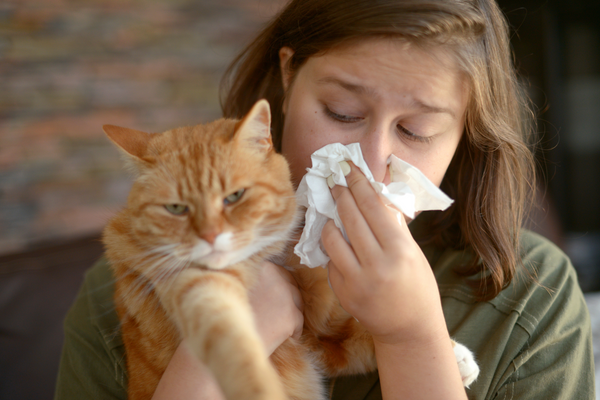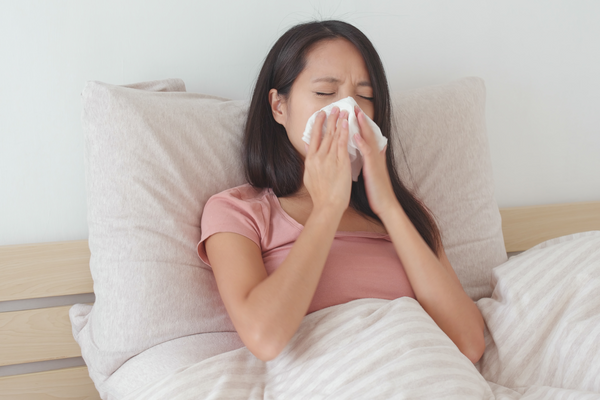How to Remove Dog Hair From Here, There, & Everywhere Around the Home

Whether you’re getting ready to adopt a new canine companion or are already used to all your rugs and upholstery covered in fur–learning to control shedding and clean up all that hair is an essential aspect of pet care. All dogs shed (except, of course, for hairless breeds). The shedding process is entirely normal for most canines (some more than others!), but it can certainly be frustrating for pet parents who feel like they spend all of their time vacuuming dog hair tumbleweeds.
Luckily, there are ways you can keep your dog’s shedding – and dander – under control and remove all that shed dog hair that’s lingering around your home. We have the details for you here.
Why Do Some Dogs Shed More Than Others?
In healthy dogs, shedding is typically a normal process in which your dog’s body naturally removes old, unneeded, or damaged hair. Once the older hair is shed, room for new and healthy hair can be made. Different breeds shed at different times and rates throughout the year. Many breeds grow thicker coats as the weather cools and winter progresses. In the springtime, they’ll shed the excess hair to regulate their body temperature better. Even shedding that seems excessive can be expected, depending on your dog’s breed, weather conditions, diet, age, and many other factors.
In some cases, abnormal or excessive hair loss may indicate an underlying medical condition, especially if the animal’s shedding is accompanied by symptoms like skin irritation, itching, rash, or higher than average licking. If you think your dog is shedding excessively, it’s worth a trip to the vet to get things checked out; some canine medical conditions can cause excess hair loss. Some of the most common problems contributing to shedding include allergies, hormonal issues, parasites, fungal infections, sunburn, and even stress.
When choosing a dog, it’s important to consider grooming needs and allergies. Some breeds shed seasonally, and others shed year-round. A common misconception is that “hypoallergenic” dog breeds won’t shed or cause an allergic reaction. There are no truly hypoallergenic dogs, but there are breeds that produce less dander.
How to Reduce Dog Shedding
Thankfully, there are ways to help reduce and prevent excessive shedding.
- Regular (even daily) brushing is the most effective way to keep your home hair-free. There are many types of dog brushes, and the best one for your pup depends on the type of coat they have. Generally, bristle brushes work on all coat types. Deshedding tools, like the FURminator, are great for removing dead hair from your dog’s undercoat.
- Bathe pets regularly with our Anti-Allergen Pet Shampoo to remove allergens from their fur. Our Anti-Allergen Pet Shampoo neutralizes allergens in pet dander and dust mite allergens while cleaning and conditioning for an extra-soft, fresh-smelling coat. The 100% biodegradable plant and mineral-based formula makes our pet shampoo an environmentally-friendly choice.
- Feed your dog a high-quality diet. Remember, a dog’s coat is often a reflection of what they eat. Talk to your veterinarian to determine which foods work best for your pup.
How to Remove Dog Hair Around the Home
Here are a few tips to put you on the path to a cleaner, less dog-hair-covered home:
- Frequent vacuuming is the first line of defense against dog hair! Remember, hair that is newly shed is easier to remove. Given enough time, dog hair has a way of working its way deep into fabrics. Always clean from high to low, using the appropriate attachments and vacuum surfaces like walls, window treatments, upholstered furniture, carpets, rugs, and hard floors. If your dog is a heavy shedder, vacuum behind and under furniture at least once a month.
- Try a silicone bristle broom to remove embedded pet fur from carpets and rugs. The bristles easily attract hair. After sweeping up hair, remove it with your vacuum.
- When it comes to removing dog hair and dust from surfaces like shelves, tables, desks, walls, etc., a microfiber cloth and Anti-Allergen Solution work superbly well. Together, they’ll collect the existing hair, and the spray neutralizes allergens from pet dander (as well as dust mites) on contact.
- A swipe with a slightly wet hand will often do the trick for a small area or quick fur clean-up. Have you ever petted your dog after washing your hands only to end up with a fistful of fur? Same concept!
- A slightly damp rubber glove will do the trick for oversized furniture (just make sure your upholstery won’t be damaged if it gets wet). If your sofa is suede, try using a dry glove or a lint roller instead.
- To remove dog hair from bedding, pillows, or cushion covers that can be unzipped and removed, toss them in the dryer along with a few wet microfiber cloths (the fur will cling to the microfiber cloth) and tumble on low until slightly damp, then use a clothes brush to get rid of any lingering hair.
- Before washing your fur-covered laundry (whether it’s clothing, towels, or dog beds), toss it into the dryer with a couple of wet microfiber cloths, and run the dryer on a low-heat dryer cycle for about 10 minutes. Use a lint roller (or a clothes brush) to remove any remaining hair. When you’re done, clean your dryer’s lint trap so it’s fur-free when your load comes out of the washing machine.
- When washing, use an Anti-Allergen Laundry Detergent to banish the pet dander hanging out in your clothes. While you’re at it, be careful to avoid overcrowding the washer. The clothes need room to move freely in the water so that any lingering fur can be loosened and flushed away down the drain.
- After running a pet-hair-heavy load, clean your washing machine by running an empty wash cycle with 1 cup of Vital Oxide to sanitize and deodorize the inside of your washer.






